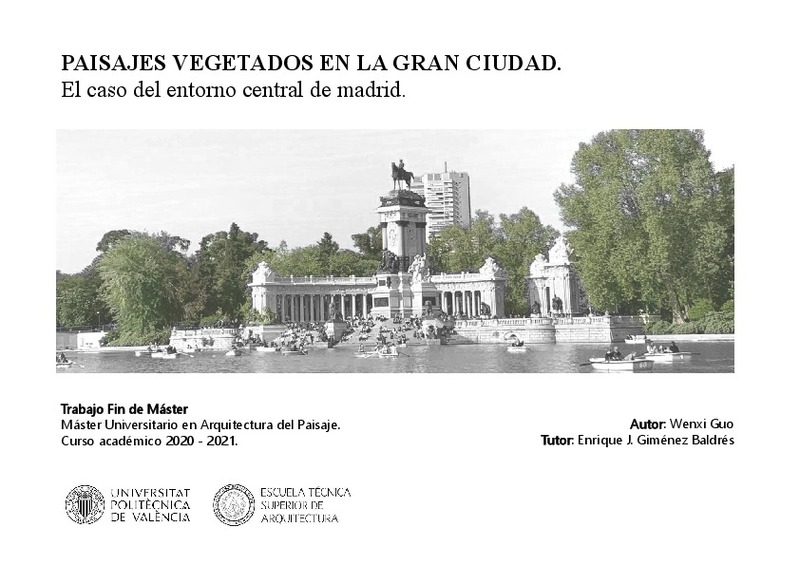JavaScript is disabled for your browser. Some features of this site may not work without it.
Buscar en RiuNet
Listar
Mi cuenta
Estadísticas
Ayuda RiuNet
Admin. UPV
Paisajes vegetados en la gran ciudad. El caso del entorno central de Madrid.
Mostrar el registro completo del ítem
Guo, W. (2021). Paisajes vegetados en la gran ciudad. El caso del entorno central de Madrid. Universitat Politècnica de València. http://hdl.handle.net/10251/167419
Por favor, use este identificador para citar o enlazar este ítem: http://hdl.handle.net/10251/167419
Ficheros en el ítem
Metadatos del ítem
| Título: | Paisajes vegetados en la gran ciudad. El caso del entorno central de Madrid. | |||
| Autor: | Guo, Wenxi | |||
| Director(es): | ||||
| Fecha acto/lectura: |
|
|||
| Resumen: |
[ES] Uno de los factores más decisivos para conseguir elevar la calidad ambiental de nuestras ciudades es la presencia vegetal en el paisaje urbano y la existencia de lugares donde esa vegetación acoja a los ciudadanos, ...[+]
[EN] One of the most decisive factors in raising the environmental quality of our cities is the plant presence in the urban landscape and the existence of places where this vegetation welcomes citizens, providing them with ...[+]
|
|||
| Palabras clave: |
|
|||
| Derechos de uso: | Reconocimiento - No comercial (by-nc) | |||
| Editorial: |
|
|||
| Titulación: |
|
|||
| Tipo: |
|
Localización
recommendations
Este ítem aparece en la(s) siguiente(s) colección(ones)
-
ETSA - Trabajos académicos [4687]
Escuela Técnica Superior de Arquitectura







